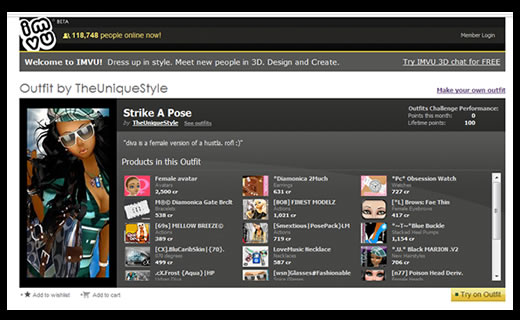Should IMVU Credit Group Buying For Driving Virtual Good Purchases?

You already know how the group buying thing has worked out for Groupon (ridiculously well), but restaurants, spas and yoga studios aren’t the only ones who find a little bit of peer pressure beneficial in driving sales.
IMVU, the creators of a virtual world where users can buy clothes and accessories for avatars, recently tested a group buying promotion for in-game currency that brought in $112,000 in 3 days. {VentureBeat} Not quite the millions of dollars that Groupon or competitors like Living Social have taken in on special national promotions, but not too bad for what amounts to pixels. Also, unlike Groupon and LivingSocial, there aren’t any physical products to deal with at any point so the profit margins on those promotions are probably quite impressive.
Virtual currency purchases amount to $40 million a year for IMVU. The company has 6 million items in its virtual catalog, and 7,000 user generated items are added every day.
We don’t doubt the power of a group buy or time limit in prompting people to spend money (the time limiting has worked well for Gilt, Hautelook and other sample sale sites), but do have to wonder if the promotion would have worked just as well without the group component. The first group buying deal was for 50% off the price of 200,000 credits if 300 people signed up. The discounted price was $99, and in the end more than 1100 users signed up.
From the VentureBeat post, it isn’t clear if the limited time 50% off promotion had been tried before without the group component. It’s doubtful that it hurt anything, but limited availability + saving money isn’t exactly a new discovery. If we had to guess, we’d put our money behind those two things making the promotion successful rather than the power of the crowd.
Either way, let’s give a “well played” to IMVU for coming up with a fresh spin on a somewhat established promotional tactic.
